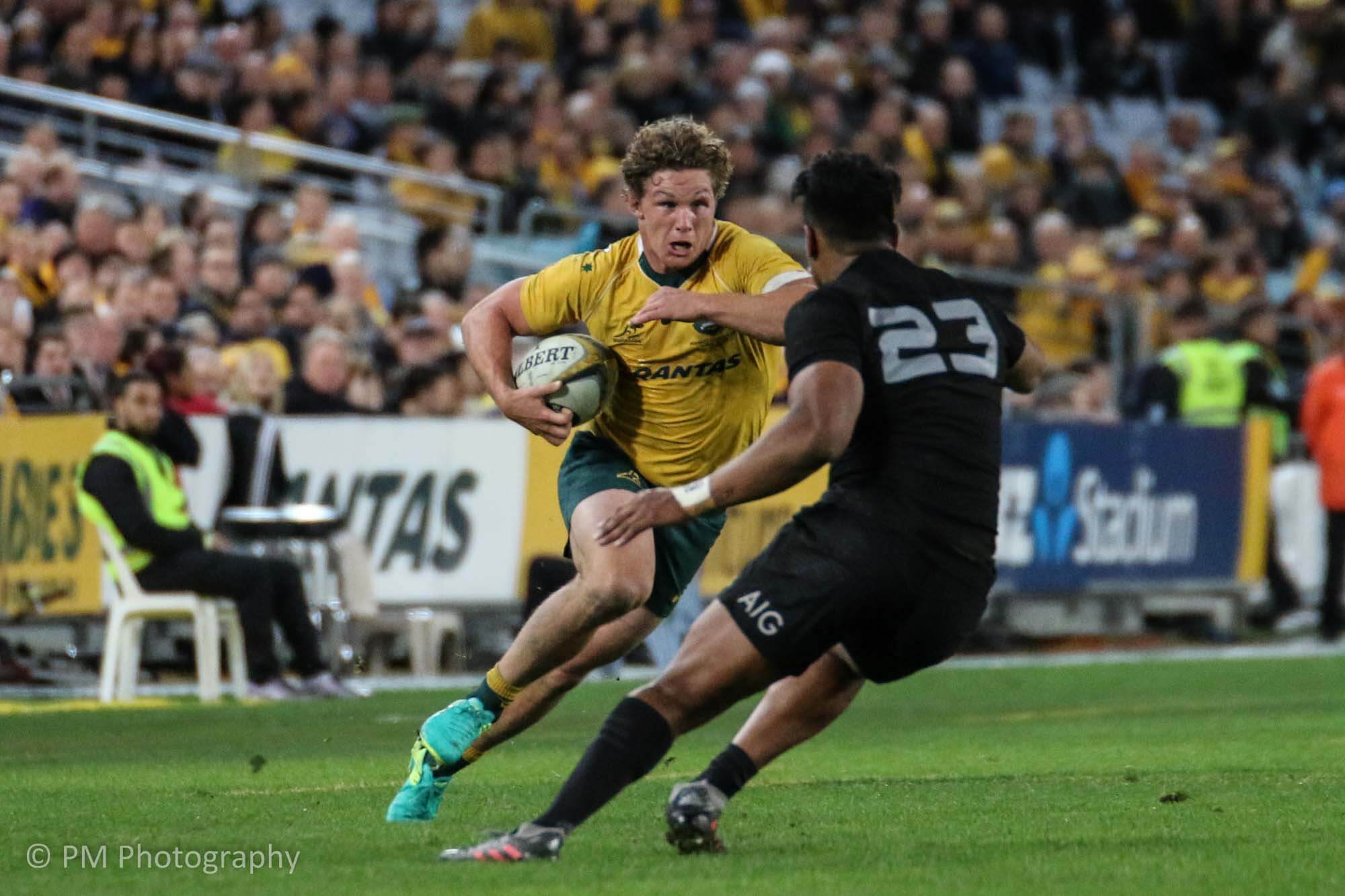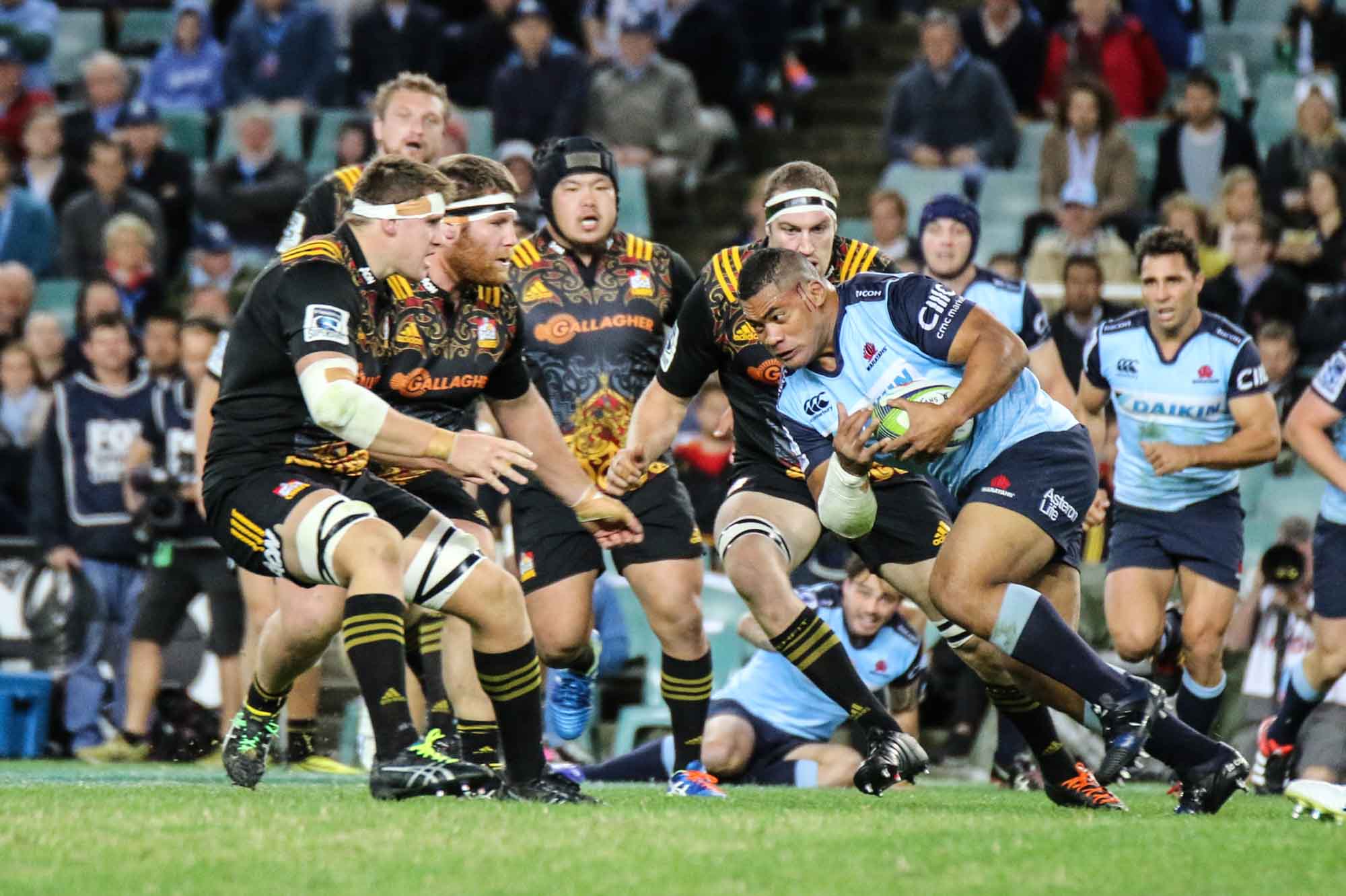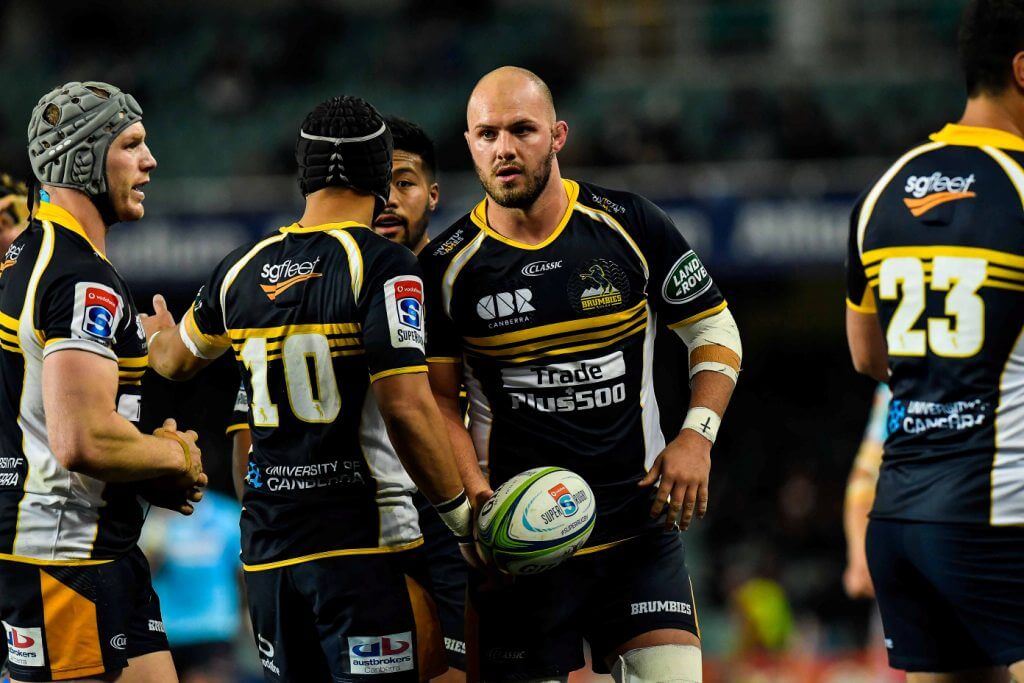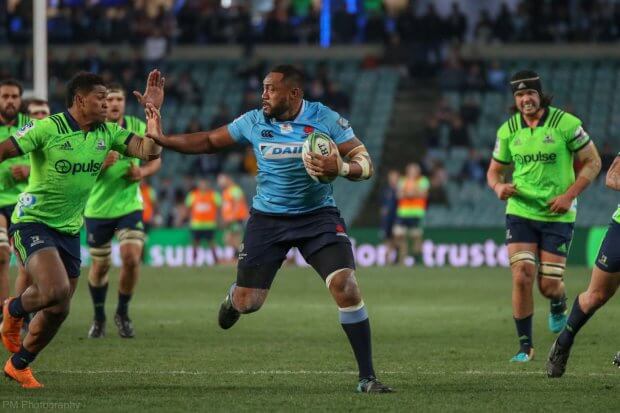The ability of a forward pack to get over the advantage line is possibly the single most important determinant of a team’s success. Obviously, the forward pack also has to secure and retain possession, but if you’re going backwards every phase then that doesn’t count for much. Front-foot ball has become a very difficult thing to achieve in the modern game due to the almost universal employment of rush defences. These have an innate advantage over the attacking team because the attacking team must start by going backwards (with a pass). When the advantage line is not met the backline is effectively shut out of the game, and the pressure of repeatedly going backwards usually results in either a turnover or a poor kick which returns possession to the opposition.
I have put together the average metres per carry stats of the best Australian Super Rugby forward pack in 2019 vs the stats of Michael Cheika’s preferred forwards based on selection in 2018:
Wallabies forward pack
- Scott Sio (3m – started 12/13 tests)
- Tolu Latu (5m – 4 hookers started 2-4 tests each, but Tolu Latu played in the most overall including bench appearances)
- Sekope Kepu (2m – started 5 tests)/Allan Alaalatoa (1.3m – started 5 tests)
- Izack Rodda (5m – started every test)
- Adam Coleman (3m – missed only 3 tests)
- Lukhan Salakaia-Loko (3m – Salakaia-Loko started more tests than any other 6)/Jack Dempsey (8.8m – Jack Dempsey played all 3 tests he was fit for)
- Michael Hooper (6m – started every test)
- David Pocock (5m – started every test he was fit for)
Super Rugby forward pack
- Jean-Pierre Smith (2m)
- Damien Fitzpatrick (3m)
- Harry Hoopert (5m)
- Luke Jones (8m)
- Harry Hockings (5m)/Matt Philip (4.5m)/Izack Rodda (5m)
- Pete Samu (8m)
- Brad Wilkin (5m)/Michael Hooper (5.6m)
- Lachlan McCaffrey (8m)
If every player in each forward pack takes 1 run, then the Wallabies forward pack goes 25.5 – 36.9m (depending on whether Kepu and Dempsey are starting), while the Super Rugby pack goes 73.6 – 74.2m (depending on whether Hooper and Rodda are included). This is an astonishing difference of 37.3 – 48.7m in just 8 carries. In fact, each forward in the Super Rugby pack is going an average of 2 – 2.91 times as far or 4.7 – 6m further than their Wallabies counterparts per carry.
By way of comparison, the 2018 All Blacks pack went 50m in 2018 Super Rugby after 1 carry each (many All Blacks have played little or no 2019 Super Rugby so these stats are useless or unavailable). This means that the Wallabies pack is carrying almost half as far as the All Blacks pack in Super Rugby. In test rugby however, the All Blacks average carry distance per 8 goes down to 40.9m while promisingly the Wallabies pack boosts to 39.5m due to players like Hooper and Pocock lifting for the occasion (this value is approximate as Wallabies stats for Salakaia-Loko are difficult to find).

Of course, this is a very simplified view. Players like Pocock bring a lot more to the game than run metres. Kepu can probably hold up a scrum against the Springboks front row better than 20-year-old Hoopert. But there is still a point to be made here, particularly with regards to the backrow. Second rowers should not be playing at blindside flanker and openside flankers should not be playing at number 8 – simply shoving McCaffrey and Samu into the Wallabies pack in place of Hooper and Salakaia-Loko gains the Wallabies another 2.2m per carry, bringing them up to 43.1 – 48m after 8 carries. To be fair to Cheika, Dempsey was not available throughout most of 2018 and his presence would have gone some way to getting the Wallabies over the advantage line.
There is also a serious problem at hooker. Not only does Fitzpatrick dominate his competition with 74m from 6 carries, but Anaru Rangi comes second with 52 metres from 9 carries despite also being uncapped. Using the argument that Latu brings more to the forward pack around the park just falls flat here, as while Fitzpatrick and Latu have both missed 2 tackles this year Fitzpatrick has successfully completed 35 while Latu has managed only 5 (playing only 30% as many minutes).
Even just watching their games completely dispels this myth as Fitzpatrick has the skills, speed, fitness, and game sense to mix in with the backs without botching their plays. Fitzpatrick has better lineout stats ,and despite having played vastly more minutes has conceded the same amount of penalties as Latu (1). These stats were similar last year, but Fitzpatrick was overlooked while Latu got called up to the national squad. It is shocking that Fitzpatrick has not at least run on from the bench for the Wallabies, especially last year when there was a serious depth problem at hooker. Paenga-Amosa was a better choice than Latu, but statistically there was no serious choice at all.

There are many tricks that professional teams employ in order to increase their odds of breaking the advantage line (I’m a bit sick of seeing blokes rolling around on the ground trying to gain an extra foot after the tackle), but the conventional wisdom is that a bigger bloke is usually going to go further in contact than a smaller bloke. So how does a front rower with a weight of only 106kg manage such good advantage line stats?
The answer is simply that a lot of metres can be gained by be able to step into contact from an angle, or make/receive a last second pass to get the ball away from dominant tackles, or being rugby smart enough to take advantage of the backline’s playmaking abilities. Sadly, many of Cheika’s forwards are little more than meat sledgehammers. The image below was taken from the recent Chiefs v Hurricanes game, and shows the likely most skilled hooker in the world (Dane Coles) recognising that Retallick has 20cm and 10kg on him, and shuffling the ball onto Toby Smith who has 5cm and 15kg on defender Mitch Karpik. There is also a slight change in angle involved as Karpik was initially moving to assist Retallick with the Coles tackle. This results in a carry going several metres over the advantage line, while if Coles had kept hold of the ball the Hurricanes would likely have gone backwards.
Being realistic and discarding players who are almost certainly not going to start for the Wallabies this year, you could restrict selection to nationally capped props and second rowers and start David Pocock. Even this small concession makes massive strides towards the advantage line in the backrow and at hooker:
Potential Wallabies forward pack
- Taniela Tupou (4m)
- Damien Fitzpatrick (3m)
- Sekope Kepu (2m)
- Izack Rodda (5m)
- Rory Arnold (4m)
- Jack Dempsey (8m)
- David Pocock (5m)
- Lachlan McCaffrey (8m)
Compared to the Wallabies 25.5-36.9m per 8 carries, and the All Blacks 50m per 8 carries, this team goes 57.4m per 8 carries and is still very dominant around the park. Even if Cheika prefers to stick with Sio over Tupou and Coleman over Arnold, the team still goes 54.9m per 8 carries. Hooper can also be slotted in for McCaffrey or either can be brought on from the bench, as the latter is unlikely to be able to maintain his stellar numbers at test level while Hooper actually rises to 10.3m per carry when wearing the green and gold.

The most important take-away from this dissection is that there are multiple strong running backrowers in Australia, and the Wallabies need to recognise this talent and play one of them at 6 while potentially having the other share time with Hooper. Australia previously had two premier world talents at 7 in George Smith and Phil Waugh, but back then there was common sense enough not to play them both at the same time.
Additionally, the Wallabies have fallen far behind the world trend of having hookers who can run and pass, and this needs to be rectified immediately. The experience of Tatafu Polota-Nau (who was not included in these statistics due to spending most of his playing time in England) may still be preferred if he is in form, but if Fitzpatrick is fit then he needs to be given a shot at test rugby.
Only once these changes are made will we see a Wallabies backline which scored half as many points in 2018 as in 2017 re-enter the competitive international arena. Let’s not forget that in 2017 (a year in which the Wallabies beat the All Blacks), Dempsey and Sean McMahon were in the backrow and Stephen Moore was the reserve hooker. It will take a similarly sturdy setup again in 2019 to give the Wallabies a shot at World Cup glory.

